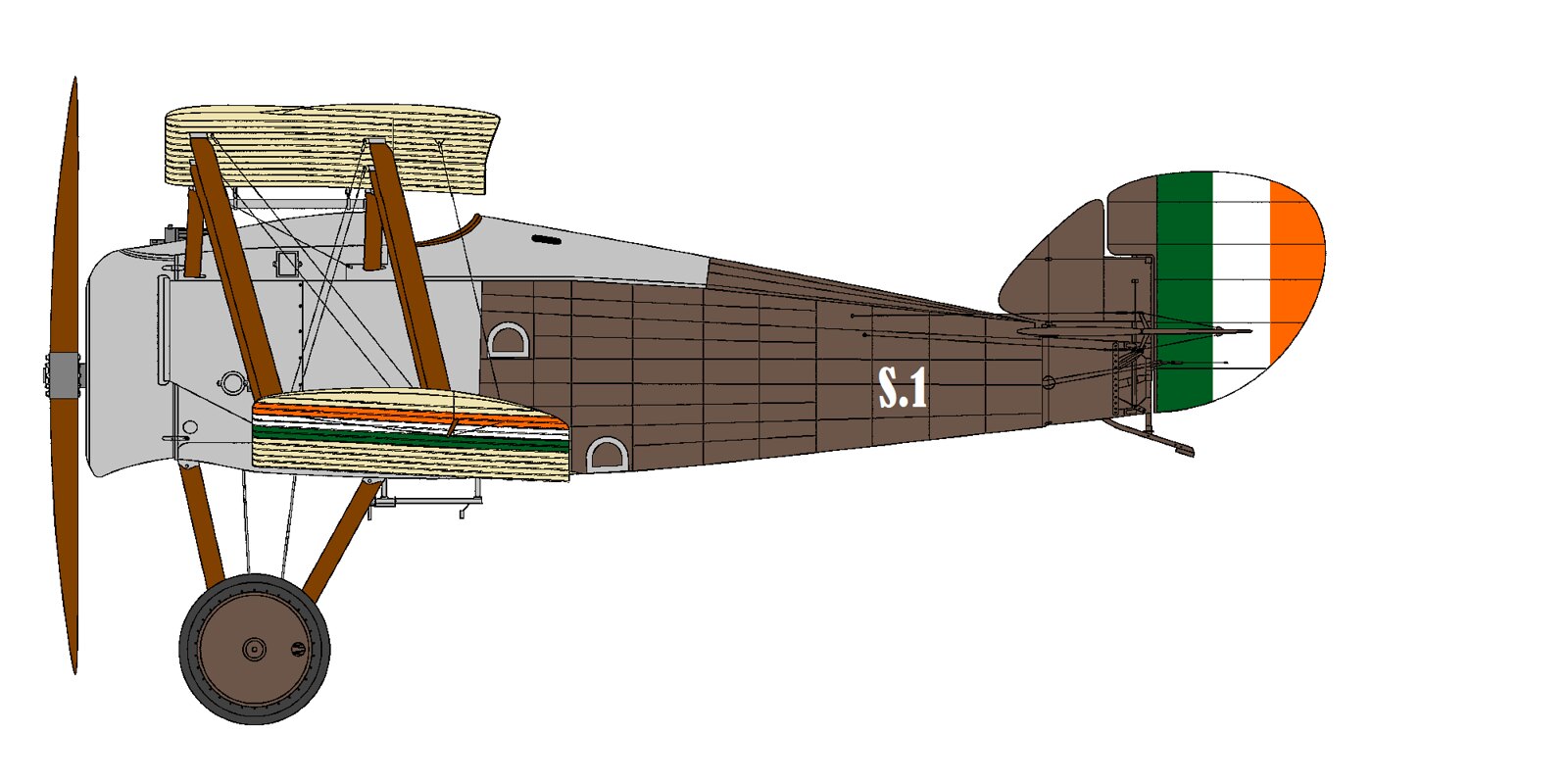Irish Free State
Renault FTWith the Civil War raging, the Irish National Army realised it needed a wider range of equipment. Despite the historic tension between the nations, Britain was quick to support the Irish government, offering small arms, artillery, and armoured vehicles.
The National Army wanted tanks to support their armoured car fleet but felt that the massive rhomboids were not appropriate. Britain had a reasonable number of Renault FT-17s in storage, which they were happy to pass to the Irish. After some discission, the National Army opted for 18 FT-17s, plus 6 more for use as spares. 10 of tanks mounted the Hotchkiss machine gun, while the other 8 carried the 37mm Puteaux gun.

Dublin was already in pro-treaty hands by the time the FT-17s were delivered, but the new tanks saw action during the operations to liberate the major towns held by the anti-treaty side. Their role was often symbolic, as anti-treaty forces had no weapons capable of stopping them. When used against anti-treaty barricades and fortified positions, the tanks often caused panic amongst their opponents.
As the Civil War moved into the guerilla war phase, the FT-17s were of little use, as they were too slow for cross country advances, but the National Army did use the 37mm armed tanks on a number occasions to support infantry operations.
After the Civil War, the FT-17s remained in service, mainly used for training and parades. They remained in use into the 1930s, when they were finally replaced by new Vickers 6-ton tanks. Despite being officially retired, at least 6 were brought back into use during the Emergency Years (as World War Two was known in Eire) but were finally and properly retired again in 1945.
Two FT-17s remain in Ireland, one is on display at Curragh Camp, the other is held by the Cavalry Corps in its historic vehicle collection and is regularly seen during Cavalry Dat parades.
Sopwith SnipeAircraft played only a small part in the Irish Civil War. After the war, the Irish Army Air Corps was expanded with the purchase of aircraft from the UK. Among the combat capable aircraft purchased were 8 Sopwith Snipe fighters. These complemented the Bristol F2Bs and Airco DH9s then in service.

The Snipes were well liked by their pilots for their speed and agility, but three were written off in accidents in quick succession in 1925. The remaining 5 served with the Air Corps until 1931, when they were replaced by 10 Gloster Gamecocks purchased from the RAF.
Vickers 6 TonTo replace the aging FT-17s, Ireland opted to purchase 8 Vickers 6 Ton tanks in 1934. These were standard pattern single turret vehicles, mounting a 47mm 3-pounder gun.

The tanks were mainly used for training until the Emergency years, being used to allow infantry units to become familiar to working with tanks.
With the outbreak of war, the tanks, like the rest of the army, were placed on alert in case of any attacks on Irish soil. The Vickers saw considerable use during the Emergency, as they represented the largest tank force within the Republic.
By 1945 the Vickers were essentially worn out by their heavy use during the war years. Ireland looked for alternatives to replace them and were happy to snap up 24 M5 light tanks from British Army surplus. These new tanks replaced the Vickers in 1946.
Dingo - KoreaPostscript. Ireland had left the British Commonwealth in 1949. However in 1950 Ireland was quick to offer troops to the UN Force in Korea. After discussions between Dublin, Washington and London, Ireland agreed to equip an artillery battery, which would join Commonwealth troops in Korea. After training on new 25-pounder guns in the UK, the Irish contingent sailed for Korea in 1951.
The Irish first saw action during the Battle of Kapyong, where their guns worked alongside 16 Field Regiment Royal Regiment of New Zealand Artillery in support of 3rd Battalion Royal Australian Regiment and 2nd Battalion Princess Patricia’s Canadian Light Infantry, who were in heavy combat with Chinese forces. The Irish were commended for their gunnery during the battle.
For political reasons the Irish battery was placed under Canadian command after Kapyong, as this was more palatable than serving directly under British command. The Irish gunners joined 25th Canadian Brigade and served alongside the Canadian gunners of 2nd Regiment, Royal Canadian Horse Artillery for the remainder of the war.
For forward observation missions, the Irish gunners received Dingo scout cars from British stocks, which they would operate until the war’s end.
